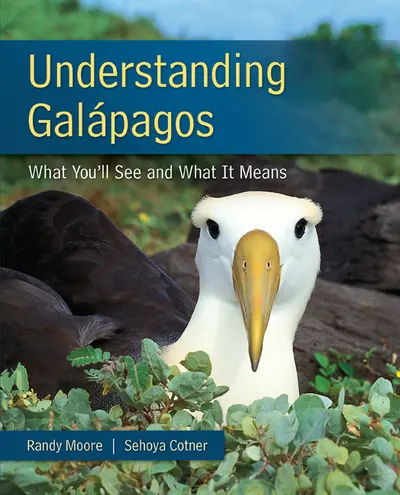My Account Details

ISBN10: 0073532282 | ISBN13: 9780073532288

* The estimated amount of time this product will be on the market is based on a number of factors, including faculty input to instructional design and the prior revision cycle and updates to academic research-which typically results in a revision cycle ranging from every two to four years for this product. Pricing subject to change at any time.
Instructor Information
Quick Actions (Only for Validated Instructor Accounts):
We wanted a book that includes up-to-date information about evolution in Galápagos, yet is accessibleby professional biologists, laypeople, students, armchair travelers, and the merely curious. Namingthe endemic-and often curious-organisms in Galápagos from checklists can be rewarding; that's whyyou will find checklists of the islands' iconic species in this book (Chapter 12). But understanding whatyou see is a different adventure, and that is one thing that we hope distinguishes this book from others.In short, we wanted to write a book that would help you not lust identify what you see, but understandwhat you see. Such an understanding goes beyond identification guides and traditional natural historyand requires a context that includes the islands' biology, geology, climate, and history.
In this book, you will find discussions (and checklists) of the native and endemic organisms you'llsee, especially the iconic ones such as penguins, land and marine iguanas, finches, giant tortoises,and albatrosses (see color images). However, we have not described all of the organisms on theislands-after all, there are more than 600 species of lichens and 2,9OO species of marine organisms,not to mention the more than 50 families, 300 genera, and 370 species of endemic and nativebeetles. Similarly, we discuss many, but not all, of the most troublesome introduced species (at lastcount, there were more than 1,400 such species). We have focused on the native and endemic "stars"of Galápagos that fill tourists' must-see lists.
Although our book emphasizes evolution, we have also addressed several other topics, for evolutioncannot be understood without a corresponding understanding of its context: namely, the geology,climate, and historical impact of humans on the ecosystem. This is why you will find discussions of theislands' geology, weather, trails, and Visitor Sites in this book.
We also wrote this book to emphasize the importance of preserving Galápagos, as well as to helpreaders understand the challenges facing the islands.
To ensure accuracy and consistency, the information in this book was derived from visiting theislands more than 30 times over many years; talking with numerous Galápagos National Park Serviceguides, boat captains, boat crews, school teachers and other residents of Galápagos, and former prisonersat the Wall of Tears penal colony; documenting the GPS coordinates of more than 350 sites,usually with two independent GNPS units (Appendix 1); studying documents at a variety of libraries,research stations, and related locations such as GNPS, Charles Darwin Research Station, NationalGeospatial Intelligence Agency, and Instituto Oceanografico de la Armada; being on the bridge withboat captains in the most challenging conditions and regions of the islands (Appendix 2); and, whennecessary, hiking, scuba diving, and interviewing local residents to resolve controversies (e.g., theexact location of Jessica; see Chapter 11).
Chapter 2 History of Galápagos
Chapter 3 Geology and Climate in Galápagos
Chapter 4 The Islands: Where You’ll Go and What You’ll See
Chapter 5 Birds
Chapter 6 Reptiles
Chapter 7 Mammals
Chapter 8 Fish
Chapter 9 Invertebrates
Chapter 10 Plants
Chapter 11 Conservation in Galápagos
Chapter 12 A Checklist of Common Native and Endemic Organisms in Galápagos
Appendix 1 GPS Coordinates of Various Sites in Galápagos
Appendix 2 Getting Around Galápagos
Appendix 3 Darwin’s Name in Galápagos
Appendix 4 Rules of Galápagos National Park
Appendix 5 Diving in Galápagos
Appendix 6 Photography in Galápagos
Appendix 7 What to Pack
Appendix 8 Friends of Galápagos
References
Glossary
Photo Credits
Index
Need support? We're here to help - Get real-world support and resources every step of the way.